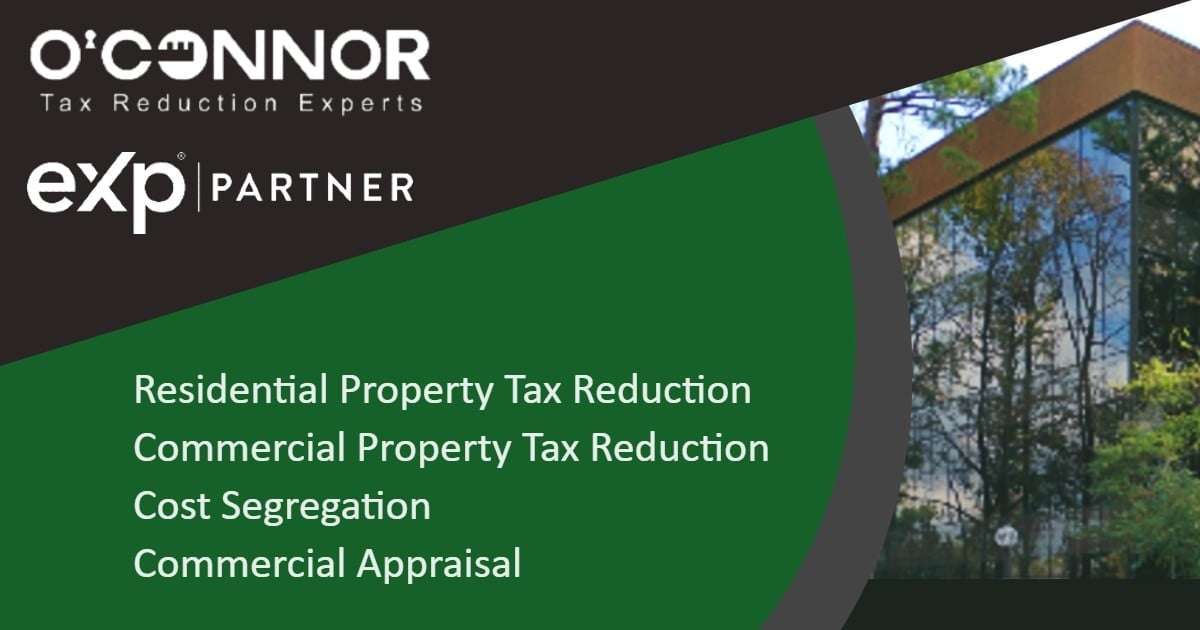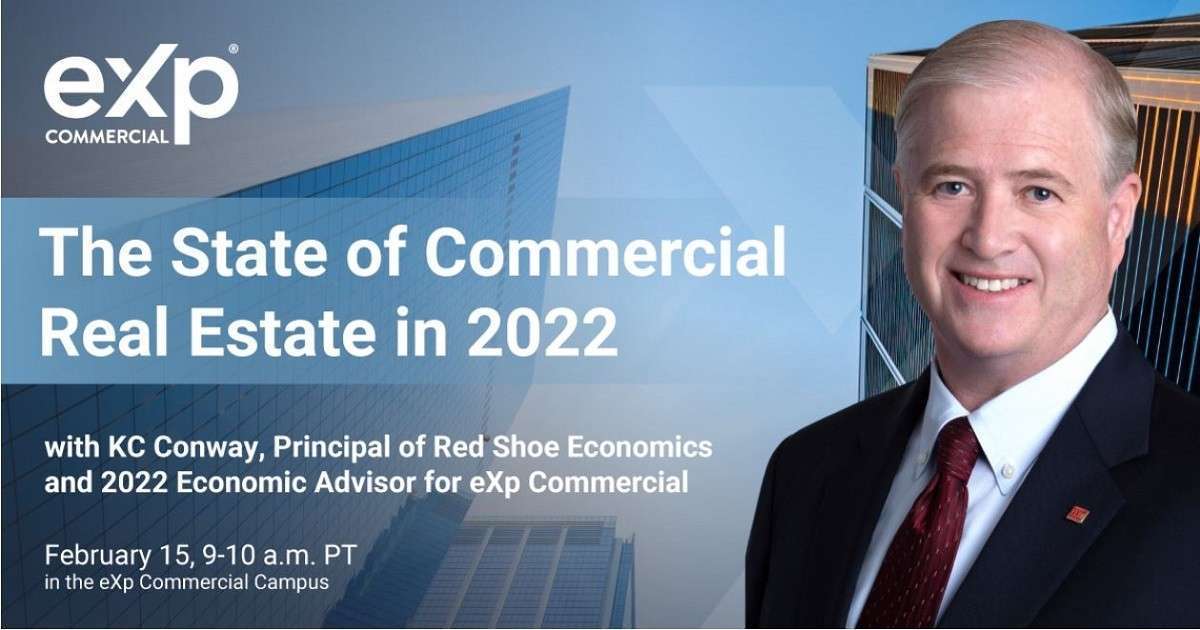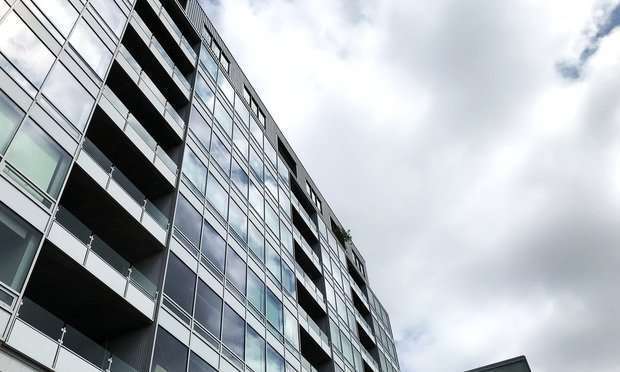
New eXp Commercial Partner, O’Connor Tax Reduction Experts
helps our clients add value through subtraction
-
Residential Property Tax Reduction
-
Commercial Property Tax Reduction
-
Cost Segregation
-
Commercial Appraisal
eXp Commercial is one of the fastest-growing national commercial real estate brokerage firms. The Chicago Multifamily Brokerage Division focuses on listing and selling multifamily properties throughout the Chicago Area and Suburbs.

New eXp Commercial Partner, O’Connor Tax Reduction Experts
helps our clients add value through subtraction
O’Connor is the largest property tax consulting firm in the United States. O’Connor’s team of professionals possesses the resources and unparalleled market expertise in the areas of property tax, cost segregation, and commercial and residential real estate appraisals. The firm was founded in 1974 and employs more than 550 professionals worldwide.

On Tuesday, Feb. 15, eXp Commercial hosted a free virtual seminar in the eXp Commercial Campus metaverse featuring founder and president of Red Shoe Economics, KC Conway as the keynote speaker. The 60-minute "State of the Commercial Real Estate Industry" seminar is open to all eXp Commercial agents and other interested parties.
With more than three decades of experience as an economist, Conway will provide industry research, data, analytics, and economic insight on the complex and changing commercial real estate market.
About KC Conway:
Economist and Futurist Kiernan “KC” Conway, CCIM, CRE, MAI is the mind trust behind Red Shoe Economics, LLC, an independent economic forecasting and consulting firm furthering KC’s mission as The Red Shoe Economist by providing organic research initiatives, reporting, and insights on the impact of Economics within the commercial real estate industry. A proud graduate of Emory University with more than 30 years experience as a lender, credit officer, appraiser, instructor, and economist; KC is recognized for accurately forecasting real estate trends and ever-changing influences on markets all across the United States. With credentials from the CCIM Institute, Counselors of Real Estate, and the Appraisal Institute, KC currently serves as Chief Economist of the CCIM Institute and as an Independent Director for Monmouth REIT MNR. A gifted and prolific speaker KC has made more than 850 presentations to industry, regulatory and academic organizations in the last decade, and has been published in many national and regional newspapers and journals with frequent contributions to radio and television programming.

Here's yet another sign that -- at a macro level -- we aren't yet hitting affordability ceilings in market-rate rentals. Perhaps counterintuitively: As renewal rents increase, so does retention. Basic economics teaches us that renewal demand will drop once price becomes an obstacle. But that isn't happening yet. Rents for market-rate apartment households renewing their lease increased 10.5% in February 2022. At the same time, renters with expiring leases renewed their leases at the highest T-12 rate on record at 56.1%. How is that happening? Remember that property managers generally do not offer renewals to non-paying residents, and these numbers include only signed renewals. At the same time, rent collections have been steady. Incomes among renters are surging -- and much more than the BLS is showing for the broader U.S. population. Apartment renters tend to be younger and more likely to have dual-income households in roommate situations. Younger workers are in high demand right now given early retirements and decline in workforce participation among older adults. Incomes for renter households signing new leases surged 15.2% over the two-year period pre-COVID through end of 2021. A typical household in a market-rate apartment has annual income above $70,000 -- keeping rent-to-income ratios in the low- to mid-20% range. Of course, this pace of growth (both in income and rent) isn't sustainable forever... we just don't know how long it'll last. But with loss-to-lease still around 10% and vacancy remaining at record lows plus rising inflationary costs (especially property management salaries), we'll likely continue to see significant renewal increases through most of 2022.
Source: https://www.linkedin.com/posts/jay-parsons-a7a6656_apartments-multifamily-rentals-activity-6906623220351696896-GwCh

Last year was a particularly unique year for the real estate industry as it pertains to the residential trends and migration patterns left in the pandemic’s wake. With a majority of the corporate real estate sector opting to implement work-from-home or work-from-anywhere models in order to retain staff and reduce overhead, there was a significant surge throughout the country in workers relocating to more suburban areas.
This occurred for a variety of reasons, such as individuals seizing the opportunity to live farther away from their offices and others realizing the potential financial savings and change of scenery that suburban living can provide. From a health and wellness perspective, moving to areas with smaller populations appeared as a practical solution in terms of lowering the risk of virus transmissions as well as a way to reduce the sources of stress that often accompany urban life, such as noise pollution and smaller living spaces.
With the worst of the pandemic appearing to be behind us, these migration trends are beginning to shift once again. However, instead of an outright reversal of the exodus seen in 2020, the population has found a middle ground. Urban areas are seeing a surge in new residents while the suburbs continue to thrive. New York City, as an example, is seeing almost twice as many new residents compared to 2019 figures while Chicago’s urban market continues to be outpaced by the suburbs. The city of Chicago itself, however, continues to retain its title as the third most populous city in the United States despite 2020’s notable outbound migration.
Chicago in focus
The unique migration patterns in and out of the Chicago metropolitan area, have resulted in an incredibly diverse multifamily market landscape. The demand in this area mirrors the broader multifamily trends being seen throughout the entire country, with some residents continuing to demonstrate a heightened interest in the suburbs while others begin returning to the inner city.
This dichotomy is likely attributable in part to the vaccine and booster shots now being more widespread and available as well as businesses beginning to bring workers back into the office. Certain companies opting to continue using their WFA models or adopt hybrid strategies, however, present one possible explanation as to why the post-pandemic world is not simply snapping back to its 2019 landscape.My firm Pensam has been consistently exercising its team’s market insights to meet this spectrum of demand. Over the past year, the firm has acquired four multifamily properties in Chicago and its surrounding suburbs as well as preferred equities and other transactions throughout Illinois and the rest of the country. This focus on the Chicago MSA is not by chance, as the area’s multifamily market activity over the past year has shown a clear interest in both urban areas and their surrounding suburbs. This interest has paved the way for firms like Pensam to execute deals inside of a particularly diverse pool.
Transactions across the spectrum1900 at Canterfield, a 260-unit stabilized multifamily community in West Dundee, Illinois, acquired by Pensam in the summer of 2021, provides an example of the types of suburban properties that saw a surge in interest following the pandemic. 1900 at Canterfield contains 18 buildings across 23.6 acres, providing the suburban atmosphere, low density, and spacious design that city emigrants are seeking, but is located less than a mile from I-90, granting easy access to the Schaumburg job market.
The building’s amenities also include a clubhouse, outdoor lounge area, and swimming pool–amenities that today’s suburban residents are expecting to accompany the increased space available.More recently, Pensam also acquired Lakeside Apartments in Wheaton and Aspen Place in Aurora, both Chicago suburbs. These two properties, containing 204 and 416 units respectively, demonstrate not only a high level of interest in the Chicago MSA but an interest that is continuing to grow. Combined with the firm’s latest acquisition, the 336-unit Butterfield Oaks in Aurora, Illinois, evidence points to this momentum carrying forward.
A promising 2022Pensam’s strong focus on Chicago and its surrounding suburbs indicates that the firm is placing great confidence in the real estate industry’s continuing rebound from the pandemic, poising itself to keep both the urban and suburban multifamily markets in focus throughout 2022.
Against the backdrop of Pensam’s performance in the national multifamily market throughout last year, this is further evidence that the worst of the pandemic’s effects on the U.S. multifamily market are likely behind us. Going forward, all signs point to this sector continuing to improve in 2022 and lead the country to pre-pandemic levels of activity and beyond.
Source: Not just a national surge Chicago area multifamily market soaring too

While investors and homebuyers’ focus has been on Chicago’s soaring single-family market, multifamily properties in and around the city are also hot.
The trend is driven by migration patterns in Chicago as workers reassess their situations now that the availability of vaccines and booster shots makes living with Covid more manageable, according to an analysis by Hen Shoval, principal and director of Investment at Pensam Capital, a Miami-based real estate investment firm, in REjournals.
“The demand in this area mirrors the broader multifamily trends being seen throughout the entire country, with some residents continuing to demonstrate a heightened interest in the suburbs while others begin returning to the inner city,” said Shoval.
Chicago’s housing market is seeing record activity. The supply of suburban homes earlier in February fell below one month and realtors say sellers can expect $20,000 over asking price. The multifamily sector is setting records as well. A suburban multifamily complex in January sold for $73.5 million, a DuPage County record. Agents at Kiser Group who brokered the most multifamily deals in Chicago last year in January told The Real Deal they expect the multifamily market to stay strong.
“We have about 38 buildings under contract scheduled to close already,” Aaron Sklar, a partner at Kiser Group, said at the time. “We’ve seen a huge push from people around the country kind of flocking to Chicago because of the high cap rates that you see here versus New York.”
Pensam is one such out-of-state buyer. It bought four multifamily properties around Chicago last year and expects activity to continue. Pensam bought a 260-unit stabilized multifamily community in West Dundee, Ill. last summer and more recently bought two properties in Aurora, Ill.“Against the backdrop of Pensam’s performance in the national multifamily market throughout last year, this is further evidence that the worst of the pandemic’s effects on the U.S. multifamily market are likely behind us,” Shoval said. “Going forward, all signs point to this sector continuing to improve in 2022 and lead the country to pre-pandemic levels of activity and beyond.”

As an astute investor, you know that long-term capital gains taxes can quickly eat away at the profits you make on your investments. Consequently, avoiding or at least deferring payment of these taxes for as long as possible is likely one of your main objectives.
For real estate investments, this usually means doing a 1031 exchange whereby you exchange your substantially appreciated real estate for other “like property,” placing your sale proceeds with a qualified intermediary (QI), also called an accommodator, who holds them until the exchange completes.
One of the biggest downsides to 1031 exchanges, however, is that they don’t always complete. In fact, they often fail. Why? Because 1031s have many moving parts. Not only must you find “like property” to invest in, but you must also designate this replacement property within 45 days of your sale and close on the replacement property within 180 days. If you miss either deadline, 1031 fails, your sale proceeds revert to you, and you are immediately liable for payment of the capital gains tax on your sale.
If you find yourself facing a potentially failed 1031 exchange, you likely are in a state bordering on panic. But what if you could rescue yourself and avoid immediate payment of your capital gains taxes? You can. The mechanism is called a Deferred Sales Trust. This legal, tested, and innovative option allows you to engage with Reef Point’s Estate Planning Team and its tax attorneys, who will create a DST specifically structured to accommodate your needs as well as your overall investment goals.
You then transfer your funds from your qualified intermediary-held funds into your new DST. In other words, the sale proceeds from your failed 1031 revert to the DST, not to you. You thus have no constructive receipt of them and consequently have no capital gains tax liability. Nor do you have any liability for depreciation recapture. The DST option also works as a rescue for a failed 721 exchange.Finally, a DST does not limit you to “like-kind” property. In fact, it doesn’t limit you at all regarding what types of “prudent investments” your DST Trustee can make on your behalf. For instance, you can instruct your Trustee to invest in any of the following:





100% Leased Chicago Retail Investment 📍 3217–3229 W Montrose Ave | Albany Park, Chicago 💰 Offered at $995,000 Excited to bring this fully ...